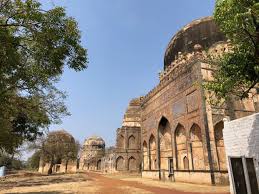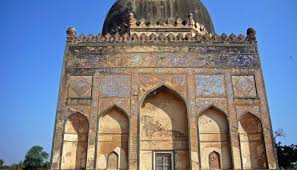

The Bahmani tombs are a significant part of the historical and architectural legacy of the Bahmani Sultanate, which ruled much of the Deccan from the mid-14th to the early 16th century. These tombs are located in the Ashtur village, about four kilometers from the main city of Bidar, and serve as the final resting places of several Bahmani rulers. The tomb complex is a fascinating example of the Indo-Islamic architectural style that developed under the Bahmanis, blending Persian, Turkish, and Indian influences. The tombs are notable for their grand scale, intricate designs, and the rich use of stucco and tile work, which reflect the splendor of the Bahmani dynasty. Each tomb is marked by its distinctive features, such as lofty domes, pointed arches, and elaborate calligraphy inscribed with Quranic verses. The most prominent among these is the tomb of Sultan Ahmad Shah Wali, revered not only for his reign but also for his spiritual stature. His tomb is richly decorated with glazed tiles, which were once brightly colored, and the interiors display beautifully painted floral and geometric patterns. The other tombs, including those of Ala-ud-Din Bahman Shah and other sultans, follow a similar architectural style but differ in size and embellishments. Surrounding these tombs are smaller, less ornate graves, likely belonging to royal family members and courtiers. Though many decorative features have faded over time due to neglect and exposure to the elements, the Bahmani tombs remain a significant attraction for history enthusiasts. They provide a glimpse into the sophisticated cultural and architectural advancements that flourished in the Deccan under the Bahmani rulers. The site also highlights Bidar's importance as a political and cultural hub during the Bahmani era